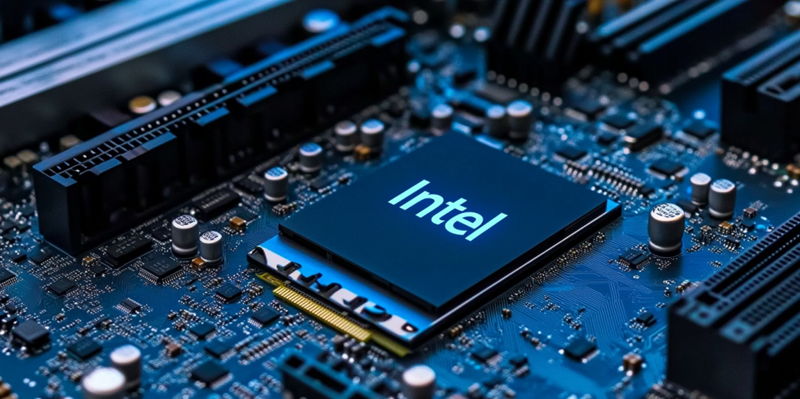Stability issues had long bothered users of Intel’s 13th and 14th generation processors. Dubbed the Raptor Lake and Raptor Lake Refresh, these CPUs were plagued by troubling instabilities that drew significant user concerns. Intel embarked on a thorough investigation to address the situation. After months of scrutiny, they confirmed that the problems, primarily related to ‘Vmin shift instability,’ have been conclusively resolved. This resolution offers relief to many users who were experiencing random crashes and performance dips with their high-end processors.
Root Cause Identified: Vmin Shift Instability
Intel’s investigation pinpointed ‘Vmin shift instability’ as the central issue behind the instability in their most recent CPU generations. This problem manifested itself in unexpected crashes and erratic behaviors that hampered the performance and reliability of the processors. Vmin shift instability is a condition where the minimum operating voltage becomes unstable, leading to unpredictable processor behavior. Upon identifying the root cause, Intel was able to devise a series of solutions to mitigate the identified issues, ensuring enhanced performance and stability.
Three crucial microcode updates were deployed to directly address the challenges caused by Vmin shift instability. These updates were gradually rolled out, ensuring that any remaining traces of instability were thoroughly mitigated. The final update, labeled 0x12B, was recently released and is now available for users to download. Microcode updates function below the operating system level, providing fixes directly within the CPU’s firmware. They help correct underlying issues which may not be apparent at the software layer, ensuring that the processors operate reliably under various conditions.
Essential User Actions: BIOS Updates and Long-Term Concerns
For users planning to purchase new 13th or 14th generation Intel CPUs, updating their BIOS to the latest version is essential for system stability. This step ensures that all relevant microcode updates, including the 0x12B update, are incorporated into the system, effectively preventing future instances of degradation and instability. Ensuring the BIOS is up-to-date is a straightforward yet crucial measure that safeguards the performance and longevity of these high-end processors.
However, for existing CPU owners, the situation is slightly different. While the updates effectively prevent further damage, they do not repair any existing damage caused by earlier instabilities. Users who continue to experience issues are advised to seek replacements for their malfunctioning CPUs. It might be inconvenient to return and replace existing hardware, but this step is crucial for the long-term health and performance of their systems. Intel’s proactive response to providing solutions helps maintain user trust, even though some inconveniences may persist during the transition process.
Extended Warranty and Discounted CPUs: Reassurance from Intel
Despite Intel’s confidence in the applied fixes, there are ongoing concerns regarding the potential long-term damage that might have occurred before the updates. To address these worries and bolster user confidence, Intel has extended the warranty period for affected CPUs to five years. This move aims to provide additional protection and reassurance for consumers, ensuring that any lingering issues can be addressed promptly. The extended warranty helps alleviate fears about concealed damage and offers users a sense of security regarding their investments in Intel’s processors.
Interestingly, substantial discounts are currently available on Intel’s 13th generation CPUs. This is likely a strategic maneuver to clear out inventory ahead of the release of their next-generation Arrow Lake processors. For consumers, these discounts present an excellent purchasing opportunity, provided they are diligent about promptly applying the necessary BIOS updates. Ensuring stable performance through updates is vital, particularly if buyers are availing themselves of discounted products. This strategic pricing shift also indicates Intel’s forward momentum and preparation for introducing new products in the near future.
Practical Considerations for Users: Navigating Stability and Longevity
With stability issues seemingly behind them, users must now navigate the landscape of potential long-term damage and its implications. Those who rely on their systems for critical tasks might remain concerned about the prospect of latent damage that could affect performance down the line. The extended warranty from Intel provides some degree of comfort, but it does not entirely remove fears about unseen wear and tear that might only manifest later. Staying vigilant and prepared to act if signs of instability reappear is essential for maintaining system integrity.
It is crucial for users to remain vigilant about any signs of instability or performance degradation. Early intervention by seeking replacements can help mitigate potential impacts. Moreover, staying informed about manufacturer updates and advisories can ensure that systems remain in optimal working condition, enhancing both performance and longevity. Through proactive steps and awareness, users can maximize the benefits of Intel’s solutions while safeguarding their processing assets against potential future issues. Intel’s comprehensive approach to resolving these issues is commendable and reflects its commitment to customer satisfaction and technological excellence.
Conclusion: Forward Safe-Guarding
Intel’s 13th and 14th generation processors, known as Raptor Lake and Raptor Lake Refresh, had long been plagued by stability issues that troubled many users. These high-end CPUs were frequently causing concerns due to random crashes and performance drops. In response, Intel launched an in-depth investigation to determine the cause of these instabilities. After months of rigorous analysis, Intel identified the primary issue as ‘Vmin shift instability’ and has now confirmed that the problem has been conclusively resolved. This fix brings a significant sigh of relief to countless users who had been facing unpredictable system behavior and reduced performance levels. The resolution promises a much-improved experience, allowing users to fully leverage the power of their high-performance processors without fear of unexpected crashes or dips in performance. As a result, the reliability and overall user experience of Intel’s Raptor Lake and Raptor Lake Refresh CPUs should see a marked improvement, restoring confidence in these once-troubled processors.

